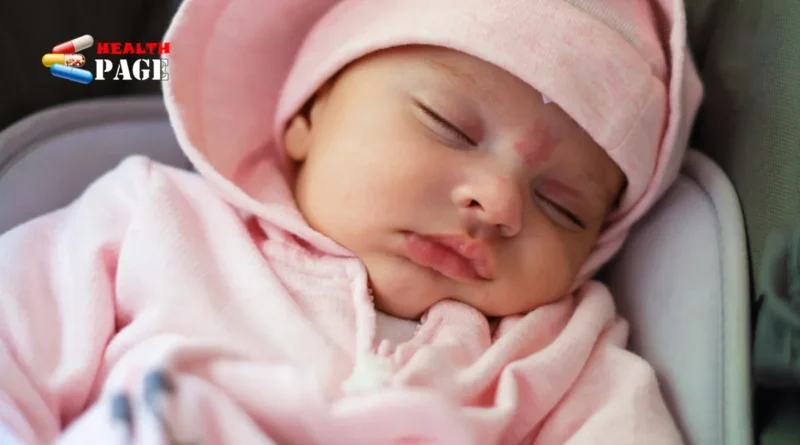Vascular skin lesions in children: A best information article
Vascular lesions (angel’s kiss, stork bite, port wine stains) on the skin of children are not uncommon. Some of them are completely harmless and go away on their own, while others require immediate medical attention. Which vascular skin lesions require treatment and removal? We asked dermatologist Natalia Sirmais to put together a useful educational program for all parents.
Vascular skin lesions in children: what are they?
What are vascular skin lesions? How are they different from other lesions, such as moles?
Unlike moles, which have melanocyte cells—different types of skin formations—they affect one or another type of vessel.
Vascular skin lesions are vascular nevi?
Not only. They also include some types of hemangiomas and vascular malformations. Vascular skin lesions are divided into congenital and acquired. The former, in turn, can be growing and non-growing.
What are the most common congenital vascular skin lesions?
The most common among congenital non-growing nevi are vascular nevi. For example, the so-called stork bite, which can also be called a stork pinch or an angel’s kiss. A stork pinch/bite is localized on the neck, an angel’s kiss is on the face. They almost always go away on their own. However, with a stork pinch, we are often talking about the genetic nature of a vascular nevus. In this case, the formation can remain for life.
What other congenital vascular formations occur in children?
The so-called port-wine stains. Another name for it is flaming nevi. These are bright pink, red or purple spots of different sizes and shapes. They are located mainly on the face, neck or upper body. Over time, they can acquire a warty structure and swell above the surface of the skin. Such port-wine stains are removed in the first year of life.
Why?
The nodules appearing on the surface of the flaming nevus can be injured and bleed. And, for example, when localized on the eyelids, they can lead to a decrease in visual acuity and the development of eye diseases.
How often do they occur in children?
Not very often. Sometimes they can be a manifestation of a genetic syndrome along with its other components.
What types of acquired vascular lesions are there?
Pyogenic granuloma (benign vascular lesion of the skin and mucous membranes — editor’s note) can occur spontaneously or when the skin is injured. Although this is a fairly rare story in childhood. It is more common in adults and is localized mainly on the face. For example, in men from shaving. They can form on women’s fingers and toes from manicures and pedicures. Children also have small formations in the form of spider-like small hemangiomas – there is a small central vessel from which branches extend, which creates a typical pattern. There are also lymphangiomas – benign tumors, a malformation of the lymphatic vessels. In this case, the formation is not red, but yellowish in color and when conducting dermatoscopy, such a characteristic sign as the appearance of the lesion is noticeable as frog spawn.
What is the main difference between hemangioma and pyogenic granuloma?
Pyogenic granuloma differs from hemangioma in the fragility of the vessels, in that it reacts to the slightest trauma. And granulomas grow quickly.

What other vascular skin lesions are found in children?
There are vascular nevi, which consist of small vessels in the form of branches (proliferation of skin capillaries) or globules and give uneven skin coloring in red. In fact, this is a congenital defect in the development of cells. Such vascular nevi can look different. Some are in the form of vessels, others are in the form of dots and globules (all vessels in this case are small). The foci can be from pale red to bluish-burgundy. Over time, they can fade, but do not disappear completely. Such vascular nevi do not require any observation, therapy or intervention, if this does not bother you from an aesthetic point of view.
Sometimes, due to the fragility of the vessels, children’s capillaries burst. For example, when a child vomits or has a high temperature. This results in such small dots, usually on the face. They go away on their own, nothing needs to be done about it.
By the way, adults have such small multiple cherry hemangiomas, red papules on their bodies. Children also have this. If a child has such multiple hemangiomas and small diverging vessels (spider-like), then it is necessary to exclude the hereditary nature of this phenomenon. There is a hereditary syndrome – Rendu-Osler-Weber disease. With it, such manifestations appear not only on the skin, but also on internal organs, for example, the liver.
That is, not all acquired vascular lesions will grow, some may go away on their own?
Yes. As a rule, all the above formations bother not children, but their parents. Especially if they are growing. If we are talking about growing formations, then it is better to diagnose them immediately, as soon as this vascular formation is detected.
Diagnosis and treatment
In what cases is treatment necessary?
As a rule, vascular formations on the skin of children are not dangerous. They do not degenerate and are not oncogenic. But if they grow, this is already considered a developmental defect. It is impossible to predict whether a vascular formation will grow or not. Therefore, it is necessary to show it to a doctor. After all, growth can occur in different directions: both in width and in depth. And sometimes what we see on the surface of the skin does not correspond to what is inside.
If they grow, then what is the danger, if not cancer?
It is necessary to prevent their excessive growth so that they do not compress vital vessels and organs.
Which specialist should I contact first?
To a pediatrician or dermatologist. Often a dermatologist can eliminate unnecessary visits to a vascular surgeon. After all, as I said earlier, some vascular lesions do not require any treatment and go away on their own. You should only go to a vascular surgeon with growing ones. If these are not growing hemangiomas, then most often we give these formations the opportunity to go away on their own up to 5-6 years.
But if the formation grows, then most likely removal will be required?
There may be options here. For example, pyogenic granulomas that are subject to growth may resolve on their own (usually within three months), or they may continue to grow. And in this case, they usually do not wait for them to grow, and they are removed. In general, both with growing and non-growing hemangiomas, an observational tactic is possible, when they look at the dynamics.
There are hemangiomas that do not grow at all, and they are often treated externally. For example, with drugs with the active substance timolol, which help reduce the manifestation of vascular damage. It happens that the skin under a growing or existing hemangioma stretches, and after it has passed on its own or has been removed, such a stretching of the skin in this place occurs. This is not dangerous, but it may not be aesthetically pleasing. But most often, vascular formations in children are not touched, they look at the dynamics. If there is growth or the formation is aesthetically disturbing, then you need to go to a vascular surgeon or just a surgeon who can remove it.

Is the removal of formations in children performed with a laser?
Yes. The method of laser removal is chosen depending on the patient’s age and what equipment is available. For children, the least painful and most effective equipment is a priority
So the removal is painless?
I can’t say that it’s completely painless. And children are often afraid of the flashes that accompany the laser’s work.
Is it necessary to conduct a histological examination?
Since blood clots are essentially removed, histology is not required. But if we are talking about all benign and malignant formations in principle, then when removing with a laser, histological examination can be carried out if necessary.
What is the rehabilitation period after removal?
It all depends on what laser was used. If the laser flashes are comparable to phototherapy, then there is no rehabilitation. If we burn the vascular formation, then there may be a crust in this place for several days.
Are relapses possible after removal?
If the formation is completely removed, it will not recur.



Pingback: Leukopenia ICD-10 Codes: Top 5 Insights for Better Diagnosis